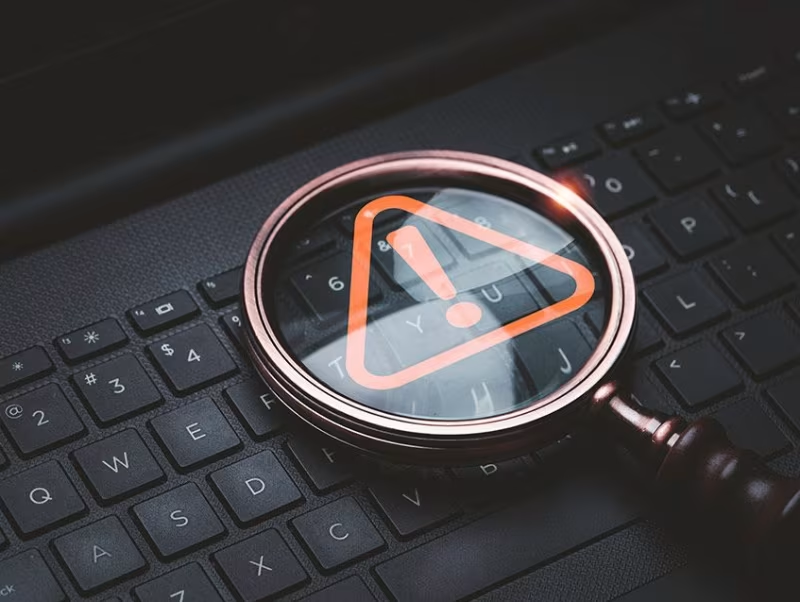Resource / Online Journal
Real-Time Threat Detection: How SOCs Can Stay Ahead of Cybercriminals
Real-Time Threat Detection is central to Security Operations Centers (SOC) operations, providing the foundation for proactive threat hunting and rapid incident response.
Published on Aug 22, 2024

In today’s digital age, cybercriminals continually evolve their tactics, making it increasingly difficult for organizations to protect themselves from security breaches. The traditional methods of responding to cyber threats are no longer sufficient, as attackers now use sophisticated techniques that bypass conventional security measures.
As a result, the need for Real-Time Threat Detection has become more crucial than ever. Security Operations Centers (SOCs) are at the forefront of this battle, tasked with monitoring, detecting, and responding to security incidents as they happen.
This article explores how SOCs leverage Real-Time Threat Detection to stay ahead of cybercriminals and safeguard organizational assets.
The Importance of Real-Time Threat Detection
Real-Time Threat Detection refers to the continuous monitoring and analysis of network traffic, systems, and user behavior to identify potential security threats as they occur. Unlike traditional threat detection methods that rely on scheduled scans or manual analysis, real-time detection offers immediate insights into ongoing activities.
This rapid response capability is critical in today’s cybersecurity landscape, where even a few seconds of delay can result in significant damage.
Cybercriminals are no longer limited to basic attacks; they employ complex, multi-layered strategies that involve malware, phishing, ransomware, and advanced persistent threats (APTs). These threats are often designed to remain undetected for extended periods, silently infiltrating systems, exfiltrating data, or causing disruptions.
Real-Time Threat Detection enables SOCs to identify and neutralize these threats before they can cause harm, ensuring that organizations remain protected against evolving cyber risks.
How SOCs Utilize Real-Time Threat Detection
Security Operations Centers are the nerve centers of an organization’s cybersecurity efforts. They consist of skilled analysts, advanced tools, and processes designed to detect, investigate, and respond to security incidents. Real-Time Threat Detection is central to SOC operations, providing the foundation for proactive threat hunting and rapid incident response.
1. Continuous Monitoring and Automated Alerts
One of the key components of Real-Time Threat Detection is continuous monitoring. SOCs deploy various monitoring tools that track network traffic, endpoint activities, and user behaviors 24/7. These tools generate logs and alerts based on predefined rules or behavioral patterns, allowing analysts to quickly identify anomalies that may indicate a potential threat.
For instance, if a user account suddenly attempts to access sensitive data from multiple locations within a short timeframe, the system can trigger an alert, flagging the activity as suspicious. By automating these alerts, SOCs reduce the likelihood of missing critical threats, enabling quicker response times. Automated alerts also help minimize alert fatigue by prioritizing high-risk incidents and filtering out low-priority or irrelevant notifications.
2. Behavioral Analytics and Anomaly Detection
Real-Time Threat Detection goes beyond rule-based monitoring by incorporating behavioral analytics and machine learning models. These technologies allow SOCs to establish baselines for normal behavior across users, systems, and devices. Any deviation from these baselines is flagged as an anomaly, prompting further investigation.
For example, if an employee who typically works from 9 AM to 5 PM starts accessing the network at odd hours and attempts to download large volumes of data, the system identifies this behavior as unusual and potentially malicious. Behavioral analytics continuously learns from past incidents and improves its detection capabilities, making it more effective at identifying new and emerging threats.
3. Threat Intelligence Integration
To enhance the effectiveness of Real-Time Threat Detection, SOCs integrate threat intelligence feeds into their monitoring systems. Threat intelligence provides valuable insights into known attack vectors, malicious IP addresses, emerging malware, and other indicators of compromise (IOCs). By correlating real-time data with threat intelligence, SOCs can quickly identify, and block attacks based on known patterns and behaviors.
This integration also allows SOCs to anticipate potential threats by staying informed about the latest tactics, techniques, and procedures (TTPs) used by cybercriminals. As new vulnerabilities and exploits are discovered, SOCs can update their detection mechanisms, accordingly, ensuring that they remain ahead of the curve.
4. Proactive Threat Hunting
While automated tools and alerts are essential for Real-Time Threat Detection, human expertise plays a critical role in identifying sophisticated threats. SOC analysts engage in proactive threat hunting, where they actively search for hidden or emerging threats that automated systems may miss. Threat hunters use a combination of experience, intuition, and data analysis to uncover signs of compromise that may be lying dormant within the network.
Proactive threat hunting involves examining logs, analyzing endpoint behavior, and investigating unusual activities to detect advanced persistent threats (APTs) and other stealthy attacks. By combining automated detection with human-led investigations, SOCs can uncover threats early and neutralize them before they escalate.
5. Incident Response and Mitigation
Real-Time Threat Detection is not just about identifying threats; it’s also about responding to them effectively. Once a potential threat is detected, SOCs must act swiftly to contain and mitigate the risk. SOCs follow predefined incident response playbooks, which outline the steps to take when specific types of threats are detected.
For example, if malware is detected on an endpoint, the SOC might isolate the affected device, block associated IP addresses, and initiate a forensic investigation to determine the scope of the breach. Real-time detection shortens the time between identification and response, minimizing the potential damage and ensuring business continuity.
6. Leveraging AI and Machine Learning
Artificial Intelligence (AI) and Machine Learning (ML) are increasingly becoming integral to Real-Time Threat Detection. These technologies enable SOCs to analyze vast amounts of data quickly and accurately, identifying patterns and predicting potential threats. Machine learning algorithms can detect even subtle changes in network behavior that might indicate an attack, adapting and improving over time based on new data.
For instance, AI-driven systems can analyze log data, network traffic, and user activity in real time to detect complex threats such as zero-day exploits or polymorphic malware. By automating threat detection and analysis, SOCs can respond faster and with greater precision, reducing the chances of a successful attack.
Challenges in Real-Time Threat Detection
Despite its advantages, Real-Time Threat Detection presents several challenges. One of the primary challenges is the sheer volume of data that SOCs must monitor. With thousands of events occurring every second, distinguishing between legitimate activity and potential threats can be daunting. This often requires a delicate balance between setting detection rules that are sensitive enough to catch threats without generating excessive false positives.
Another challenge is the rapid evolution of cyber threats. Cybercriminals continuously develop new tactics to evade detection, and SOCs must constantly update their detection tools and strategies to keep pace. This requires ongoing investment in technology, training, and threat intelligence.
Moreover, the integration of multiple tools and platforms into a cohesive SOC environment can be complex. Ensuring that all systems communicate effectively and that data is correlated accurately across different sources is crucial for the success of Real-Time Threat Detection.
Conclusion
As cyber threats continue to evolve, the need for Real-Time Threat Detection has never been greater. Security Operations Centers play a vital role in monitoring, detecting, and responding to threats as they happen, using a combination of automated tools, behavioral analytics, threat intelligence, and human expertise. By staying ahead of cybercriminals through proactive threat hunting and rapid incident response, SOCs can protect organizations from potentially devastating attacks.
However, Real-Time Threat Detection is not without its challenges. To maintain an edge over cybercriminals, SOCs must continuously adapt their strategies, invest in cutting-edge technologies, and ensure that their analysts remain well-trained and informed about the latest threats. Ultimately, detecting and responding to real-time threats is key to securing an organization’s digital assets and ensuring long-term resilience in an increasingly hostile cyber landscape.
Recommended articles


Combating Insider Threats: The SOC's Role in Monitoring and Mitigation
Take Your Identity Strategy
to the Next Level
Strengthen your organization's digital identity for a secure and worry-free tomorrow. Kickstart the journey with a complimentary consultation to explore personalized solutions.